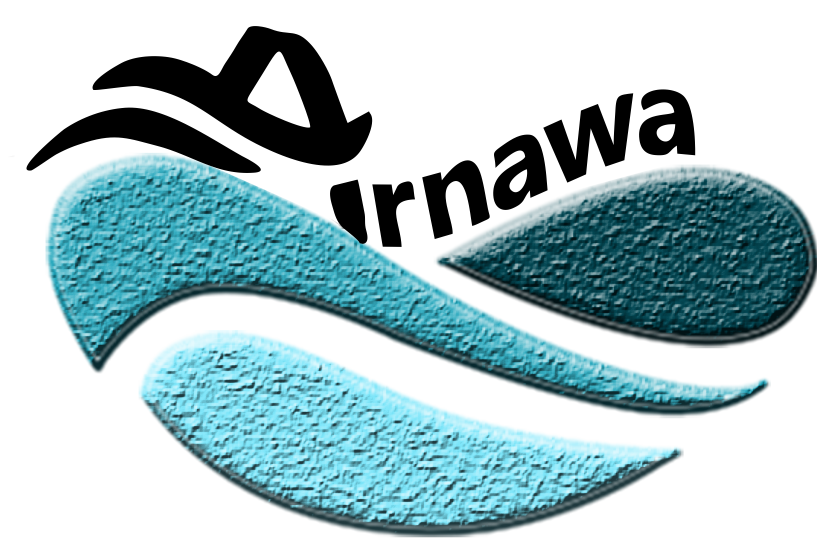
This work is licensed under a Creative Commons Attribution-NonCommercial-ShareAlike 4.0 International License.
ARNAWA applies the Creative Commons Attribution-NonCommercial-ShareAlike 4.0 International License, with the copyright on the published articles held by the journal. Authors are required to transmit the copyright to this journal once the articles are accepted. This journal is granted a non-exclusive license to publish the articles as the original publisher, along with the commercial right to publish printed issues for sale. Since this journal applies an open-access mode, authors may post articles published by this journal on personal websites or institutional repositories both prior to and after publication while providing bibliographic details that credit this journal.
By publishing with this journal, the copyright holder grants any third party the lawful right to use their published article to the extent provided by the Creative Commons Attribution-NonCommercial-ShareAlike 4.0 International license.
Subsequently, people are lawfully permitted to share, distribute, remix, adapt, and build upon the published articles for noncommercial purposes only, by providing appropriate credit or attribution (Title, Author, Source, and License of the work), including a link to the license, indicating if any changes were made, and redistribute the derivative outputs under the same license (CC BY-NC-SA 4.0).
Analisis Kesalahan Penerjemahan Sintaksis dan Semantik dalam Naskah Alih Bahasa Tarsan (Wanara Seta) Jilid I
Corresponding Author(s) : Afifah Nur Dzakiyyah
Arnawa,
Vol 3 No 1 (2025): Edisi 1
Abstract
Philology is the study of ancient manuscripts. Of the many ancient manuscripts in Indonesia, Tarsan (Wanara Seta), written in eight volumes by K.R.M.H. Suryaningrat, is one that has the potential for further research because of its uniqueness as an adaptation of Western works into a local context, as well as the historical and linguistic values in it. Tarsan (Wanara Seta) is an adaptation of the book Tarzan of the Apes by Edgar Rice Burroughs. The first volume of this manuscript has been transliterated and translated into Indonesian. However, some translation errors were found in the translated text. This study aims to identify translation errors in the Alih Bahasa Tarsan (Wanara Seta) Jilid I text using a descriptive qualitative approach by analyzing the manuscript and describing the identified translation errors. As a result, two kinds of translation errors, namely semantic errors and syntactic errors, are grouped in each chapter.
===
Filologi merupakan suatu kajian atau disiplin ilmu untuk mengkaji naskah-naskah kuno. Dari banyaknya naskah-naskah kuno di Indonesia, naskah Tarsan (Wanara Seta) yang ditulis dalam delapan jilid oleh K.R.M.H. Suryaningrat menjadi salah satu yang potensial untuk diteliti lebih lanjut karena keunikannya sebagai adaptasi karya Barat ke dalam konteks lokal serta nilai historis dan linguistik di dalamnya. Tarsan (Wanara Seta) merupakan adaptasi dari buku Tarzan of the Apes karya Edgar Rice Burroughs. Jilid pertama dari naskah ini telah dialihaksarakan sekaligus dialihbahasakan ke dalam bahasa Indonesia. Namun, ditemukan beberapa kesalahan penerjemahan dalam teks alih bahasa. Penelitian ini bertujuan untuk mengidentifikasi kesalahan penerjemahan dalam naskah Alih Bahasa Tarsan (Wanara Seta) Jilid I menggunakan pendekatan deskriptif kualitatif dengan analisis teks dan pendeskripsian kesalahan penerjemahan yang teridentifikasi. Hasilnya, terdapat dua macam kesalahan penerjemahan, yaitu kesalahan semantik dan kesalahan sintaksis yang dikelompokkan dalam masing-masing bab.
Keywords
Download Citation
Endnote/Zotero/Mendeley (RIS)BibTeX
- Ayuningsih, F. (2017). Kesalahan dalam penerjemahan teks berita Perancis (Studi kasus terhadap mahasiswa Sastra Prancis Universitas Hasanuddin). Universitas Hasanuddin.
- Badan Pengembangan dan Pembinaan Bahasa. (2023). Kamus Besar Bahasa Indonesia (edisi daring). Kementerian Pendidikan, Kebudayaan, Riset, dan Teknologi. Diakses melalui aplikasi KBBI.
- Baker, M. (1992). In other words: A coursebook on translation. London: Routledge.
- Burroughs, E.R. (1933). Tarzan of the Apes. Racine, WI: Whitman Publishing Co.
- Catford, J C. (1965). A linguistic theory of translation. Oxford: Oxford University Press.
- Catford, J. C. (1978). A linguistic theory of translation: An essay in applied linguistics. Oxford: Oxford University Press.
- Danirih, D., Ningsih, T. W. R., & Ayesa. (2022). Kesalahan penerjemahan pola sintaksis dan semantik pada proses penerjemahan berita bahasa Indonesia ke bahasa Mandarin. Jurnal Cakrawala Mandarin, 6(2), 342–351.
- Larson, M. L. (1984). Meaning-Based Translation: A Guide to Cross-Language Equivalence. Lanham: University Press of America.
- Munday, J. (2016). Introducing translation studies: Theories and applications. London: Routledge.
- Nida, E. A., & Taber, C. R. (1969). The Theory and Practice of Translation. Leiden: Brill.
- Saridaki, E. (2023). Translation errors: A taxonomic approach and their contribution to translator training. International Journal of English Literature and Social Sciences, 8(4), 27–32. https://doi.org/10.22161/ijels.84.6
- Soltani, F., Nemati, A., & Yamini, M. (2020). An analysis of translation errors in 5 literary genres based on American Translation Association (ATA) framework. Cogent Arts & Humanities, 7(1). https://doi.org/10.1080/23311983.2020.1799732
- Sujefri, A., Al Badri, H. R. I., Arifah, Z., & Basid, A. (2022). Analisis sintaksis kesalahan penerjemahan teks Bahasa Indonesia ke Bahasa Arab melalui Google Translate. Al-Muyassar: Journal of Arabic Education, 1(2), 113–120. https://doi.org/10.31000/al-muyassar.v1i2.6476
- Utami, P.S., & Purwati, E. (2021) Alih Bahasa Tarsan (Wanara Seta) Jilid I. Jakarta: Perpusnas Press.
